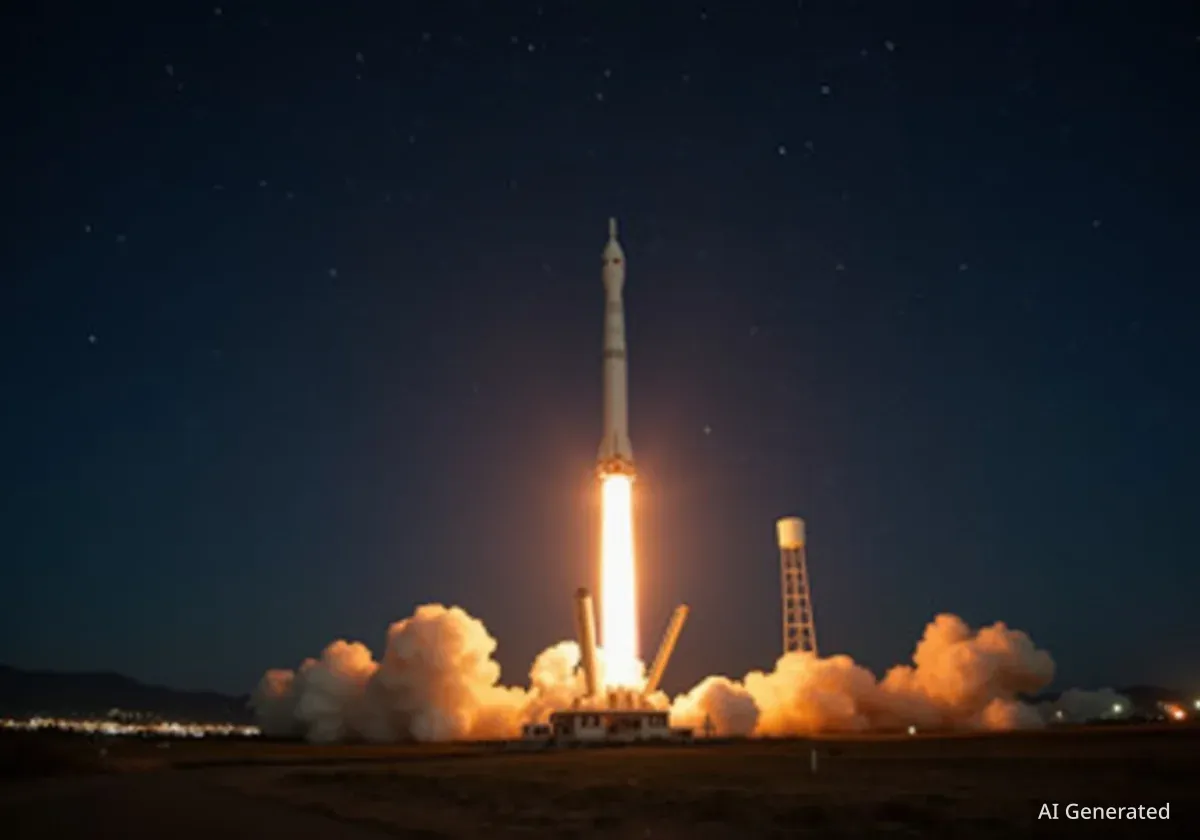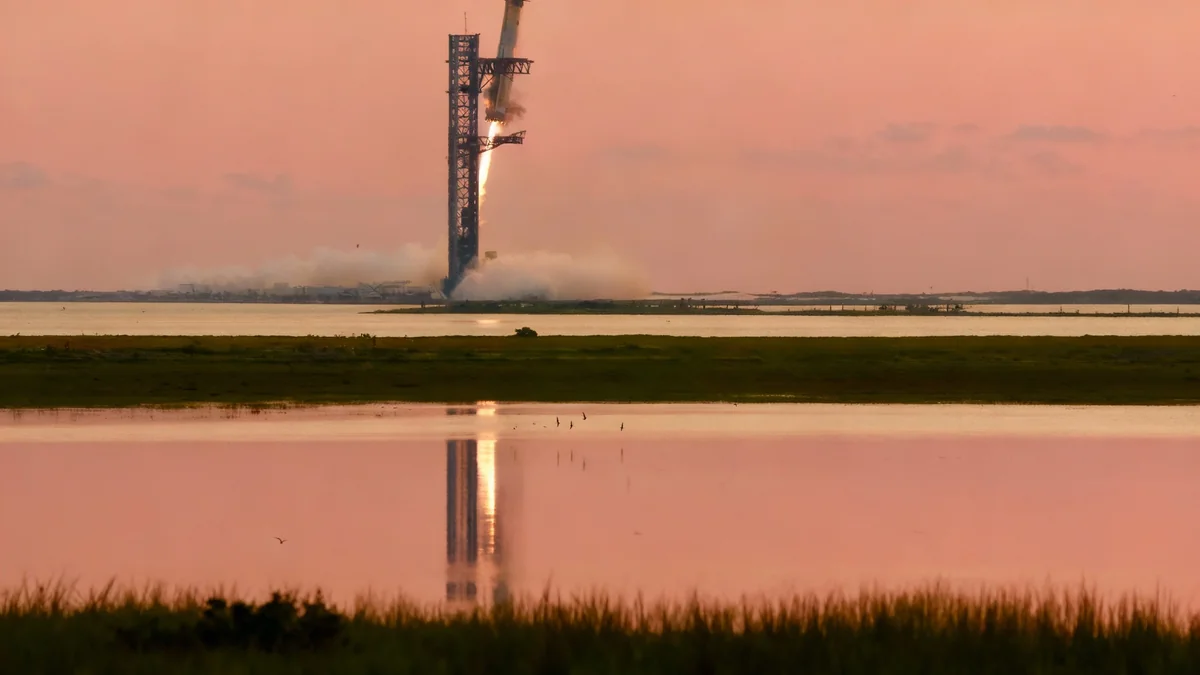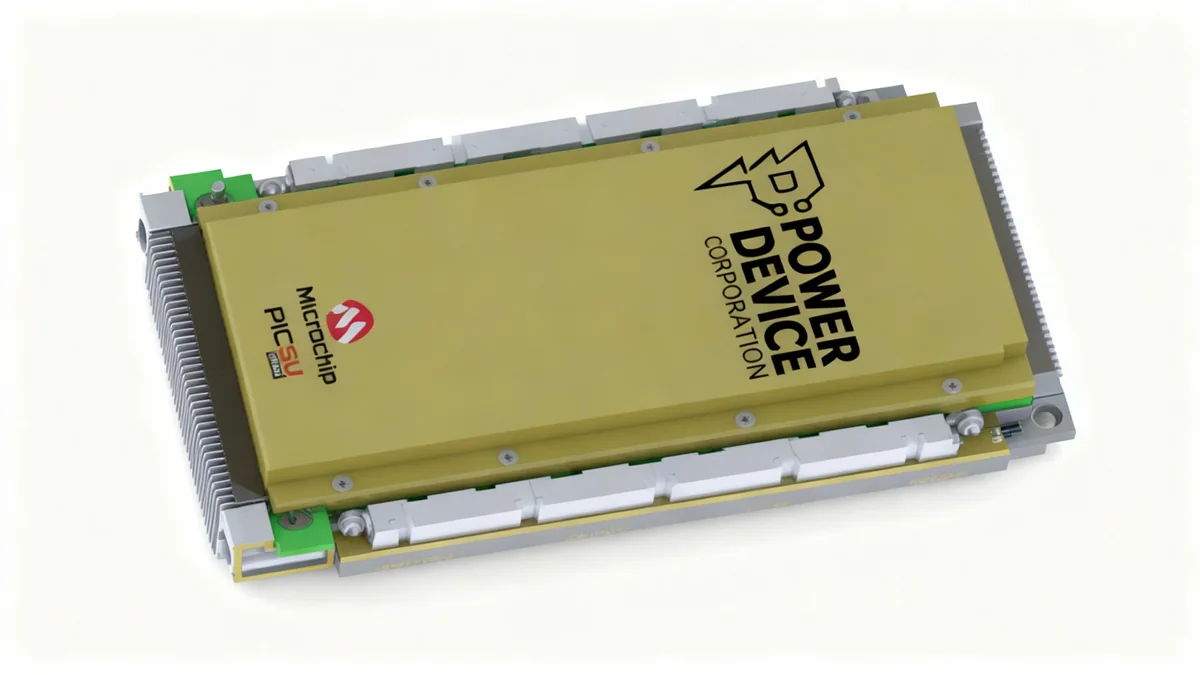SpaceX successfully launched a Falcon 9 rocket from Vandenberg Space Force Base on Tuesday evening, deploying another batch of Starlink satellites into low-Earth orbit. The mission, which lifted off at 8:54 p.m. from Space Launch Complex 4 East, adds 28 satellites to the company's growing internet constellation.
This launch marked the second mission for SpaceX from the California base this month, continuing a rapid deployment schedule for its global broadband service. Following the launch, the rocket's first-stage booster completed a successful landing on a droneship in the Pacific Ocean.
Key Takeaways
- A SpaceX Falcon 9 rocket launched from Vandenberg Space Force Base at 8:54 p.m. on Tuesday.
- The payload consisted of 28 Starlink internet satellites, which were deployed into low-Earth orbit.
- The rocket's reusable first-stage booster successfully landed on a droneship stationed in the Pacific Ocean.
- This was the second launch conducted by SpaceX from Vandenberg during the current month.
- Residents in several Southern California counties were advised of a potential sonic boom following the booster's return.
Mission Execution and Key Events
The mission proceeded as planned, beginning with a nominal liftoff from Space Launch Complex 4 East (SLC-4E) at Vandenberg Space Force Base. The Falcon 9 rocket ascended through the evening sky, powered by its nine Merlin engines.
Approximately two and a half minutes into the flight, the first and second stages of the rocket separated. While the second stage continued its journey to orbit with the Starlink payload, the first-stage booster began its controlled descent back toward Earth.
Booster Recovery and Reusability
A critical component of SpaceX's operational model is the reusability of its Falcon 9 boosters. About eight minutes after liftoff, the first stage executed a precise landing burn, touching down on the autonomous droneship 'Of Course I Still Love You' positioned in the Pacific Ocean.
This successful recovery allows the booster to be refurbished and reused on future missions, a key factor in reducing the cost of access to space. Each successful landing adds to the flight history of SpaceX's fleet of reusable rockets.
Sonic Boom Advisory
Following the stage separation and the booster's return trajectory, officials issued an advisory for a potential sonic boom. The sound, caused by the booster breaking the sound barrier during its descent, was anticipated to be heard by residents in Santa Barbara, Carpinteria, Ojai, Ventura, and Oxnard.
Expanding the Starlink Constellation
The primary objective of this launch was to add 28 satellites to the Starlink network. This constellation is designed to provide high-speed, low-latency internet service to users worldwide, with a particular focus on rural and underserved areas.
With each launch, SpaceX increases the density and capacity of its network. The satellites are initially deployed into a low-Earth orbit, from which they use their onboard ion thrusters to ascend to their final operational altitude of approximately 550 kilometers (340 miles).
What is Low-Earth Orbit?
Low-Earth orbit (LEO) is an orbital space region around Earth with an altitude of 2,000 kilometers (1,200 miles) or less. Satellites in LEO travel at very high speeds, completing a full orbit of the planet in about 90 to 120 minutes. The proximity to Earth allows for lower signal latency, which is crucial for services like Starlink that require real-time data transmission.
Vandenberg's Role in Polar Orbits
Vandenberg Space Force Base is a key launch site for missions requiring polar or sun-synchronous orbits. Its location on the California coast allows rockets to launch southward over the open ocean without flying over populated areas.
This trajectory is ideal for deploying satellites, such as those for Earth observation and certain communications constellations like Starlink, that need to cover the entire globe, including the poles. This launch represents a continued high operational tempo for the West Coast spaceport.
"Vandenberg's unique geographic location provides the necessary launch corridors for polar orbit missions, making it a critical asset for the nation's space capabilities and commercial partners like SpaceX," a statement from Space Launch Delta 30, which oversees Vandenberg, noted in a previous mission brief.
The Falcon 9 Rocket System
The Falcon 9 is a two-stage, reusable rocket designed and manufactured by SpaceX. It has become a workhorse for the company, responsible for a wide range of missions.
Key Specifications:
- Height: 70 meters (229.7 feet)
- Diameter: 3.7 meters (12 feet)
- Stages: Two
- Propulsion: Merlin engines using liquid oxygen and rocket-grade kerosene (RP-1) propellant.
The rocket's first stage is equipped with nine Merlin engines, while the second stage has a single Merlin Vacuum (MVac) engine optimized for operation in the vacuum of space. The reusability of the first stage has significantly altered the economics of space launch, enabling a higher frequency of flights.
This mission continues to demonstrate the reliability and efficiency of the Falcon 9 system, which now holds numerous records for rocket reuse and launch cadence in the aerospace industry. Each successful mission reinforces SpaceX's position as a leading provider of launch services for both commercial and government payloads.





